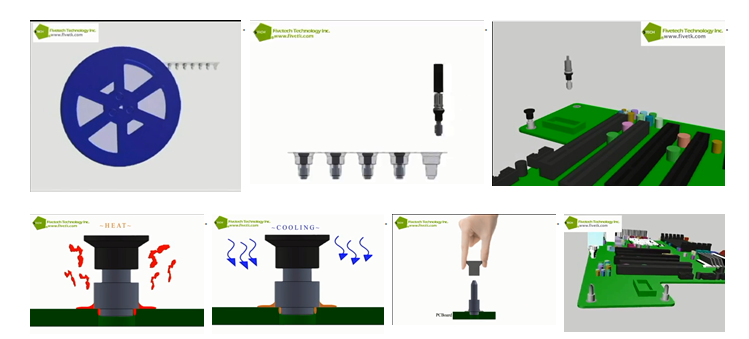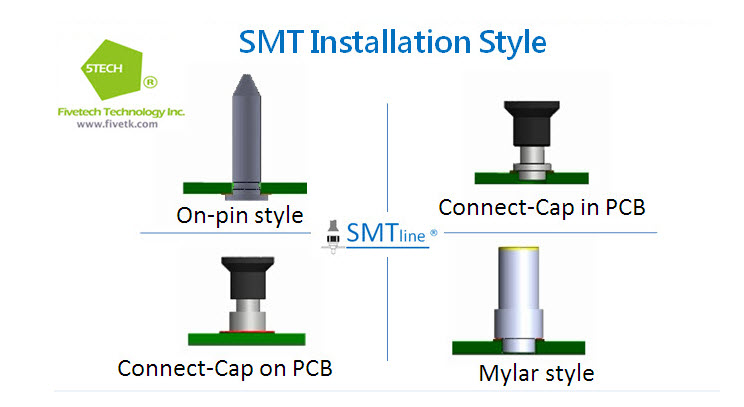2014-05-19
Plug in the traditional way lock pin on the PCB, customers often face uncertainty due to various production lines errors by manual, such as skew, deviation, loose parts or positioning while over fully tightened on PCB, all these errors will cause damage or lead to more serious cracks and cost-consuming waste of NG parts or damaged PCB.
SMT process the use of surface mounting Technology, first of all to insert the guide pins first or reel, and then automation pick and place process, vacuum nozzle suction guide pin from the reel, then delivery to the PCB with solder paste has already placed on the hole, after the guide pin placed into the hole ( or onto the PCB postion), then welding via SMT full reflux process, the process is by Heating-Soak-Reflow-cooling, four-steps procedures, cooled and solidified into a solid metal form to complete the welding process and to complete the installation. Therefore the process is the liquid solder paste cooled into a solid metal form, the whole process is using SMT automation process machine, will not cause distortion of loosen parts it can reach 100% yield. SMT process technique using on PCB for SMT captive screw/ guide pin/ standoff / nut is gradually replacing traditional PCB manufacturing technology.
SMT process advantages
- Gradually replacing the traditional lock, with increased yield and cost-consuming
- Replace the manual process to save time and reduce error-manufacturing costs
- Automated mechanical process 100% yield pick and place fast and accurate positioning
- Solder paste welding process, liquid metal cooling into solid metal, SMT process ensures the most stable assembly between the component and the PCB. 100% compatibility is also achieved without loosing parts doubts

Types of installation style on PCB applications
In addition, SMT process, due to the metal parts of different materials and shapes, in order to achieve a vacuum suction head adsorption effect more efficiently, it is recommended to use of Connect-cap or Mylar-patch.Mylar patch or connect-cap covering the top recess allowing maximizing stability of the vacuum to easily pick and place on the hole on PCB during the process. The Mylar patch or connect-cap then removed after the installation is completed.
- Down insert through hole of PCB
- On the turn welded on PCB
- On the turn soldered into the PCB
- On the turn soldered infix with the PCB
- Conventional rotary locking mode

![]()


